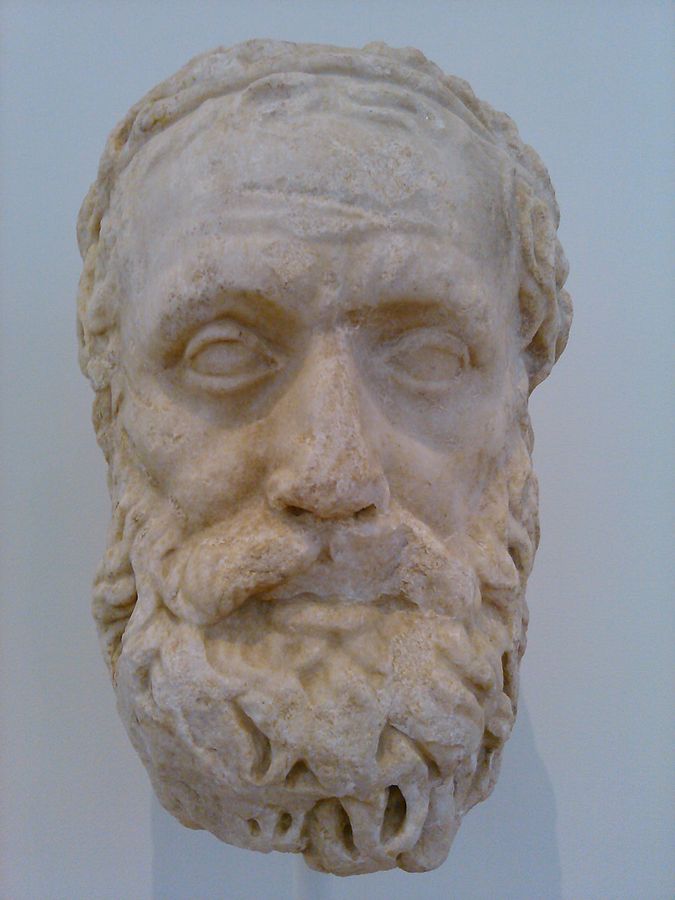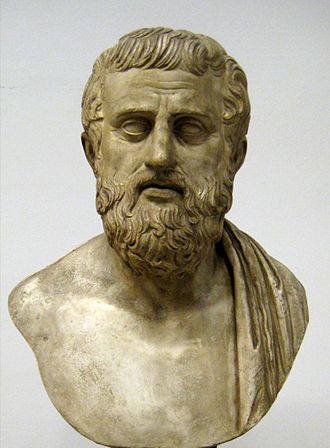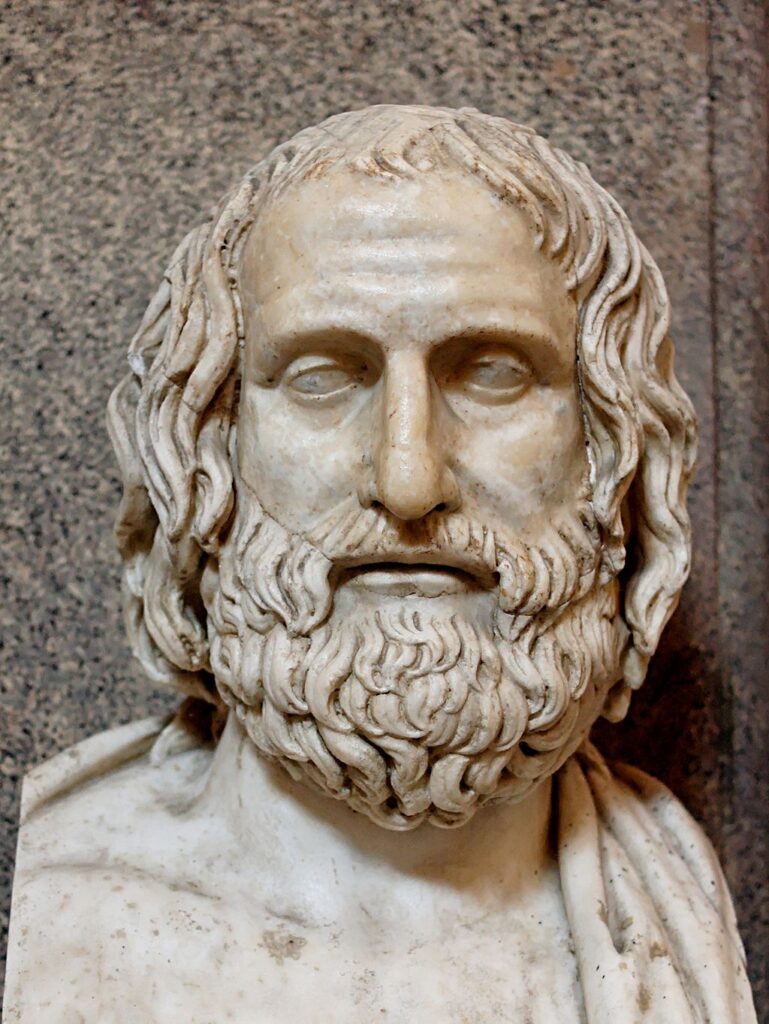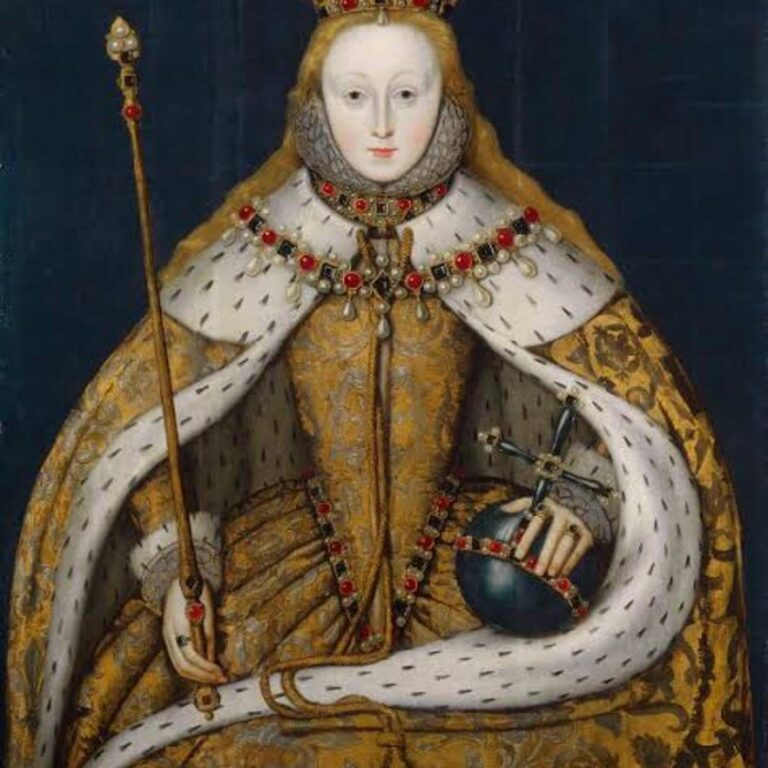The three Greek playwrights whose names echo down the ages are Aeschylus (Ai-skillus) 552‑456 B.C., Sophocles (Soffa-cleez) 496‑406 B.C. and Euripides (Uri-p-deez) 480‑406 B.C. Fewer than ten percent of their works have survived into the modern era.
The 5th Century B.C. was the Greek classical age which saw a flourishing of art, philosophy, theatre, and democracy as never before. Democracy was instituted in 510 B.C. The defeat of the Persians at Salamis followed in 480 B.C., a conflict which included the heroic stand to the death of the Spartans at Thermopylae. The Peloponnesian War with Sparta (431-404 B.C) precipitated a coup and rule by oligarchy, but the final end of the Greek classical age came when Athens was conquered by Macedonia in 338 B.C.
From Poetics by Aristotle (384-322 B.C.), founder of the Lyceum and peripatetic (walking around) school of philosophy, the evolution of Greek theatre is quite well known. The genesis of drama is in the worship of Dionysus, the god of wine and ecstasy, by way of processions through the countryside, singing dithyrambic poetry with accompanying dance. In 534 B.C. the new tyrant of Athens, Pisistratus, keen to pacify the hoi poloi to secure his rule, introduced an elaborate festival dedicated to Dionysus (Dionysia), expanding on an existing spring celebration. In this festival, three playwrights and choregia (financier of the chorus, instruments, and sets) would compete for kudos and a bronze inscribed tripod and a choragic monument. Each playwright was required to submit a trilogy of tragedies, plus a satyr for light relief (a bawdy romp performed by satyrs – half-man half-goat). Later a comedy was added. The tragedies were religious in nature, about rulers, heroes, and the gods, with overarching moral lessons. They were sung, rather than spoken, accompanied by dance.
An innovation for the Dionysia was created by Thespis, one of the chorus members. He was the first person to step out of the chorus and onto the stage, acting as a character rather than as himself – the first thespian. Thespis would interact with the chorus playing many different characters using masks to assist in the illusion. The Dionysia was performed in a theatre (theatron) underneath the Acropolis. The semi-circular area where the action took place was called the orchestra (Greek for dance-place). Later, an enclosure called the skene (skay-nay) was provided to allow actors to change character by costume and mask. From this Greek word comes the English word scene (a change). Above the skene was a winch from which an actor dressed as a god could descend from the clouds, the deus ex machina, in order to save any plot written into a hopeless situation.
Aeschylus was the first to introduce a second actor, facilitating dialogue for the first time. In the background, the chorus would accompany these actors, providing a sung narration and choreography, with moral judgement. One tragedy by Aeschylus is the Oresteia, concerning the Trojan war. Another well-known work by Aeschylus is Prometheus Bound, concerning the torture of the god Prometheus for giving fire to mankind. Seven plays survive from an original ninety.


Sophocles follows next in the timeline. His two-fold innovation was to introduce another actor to the stage, facilitating intrigue, and to begin designing sets to create more realism. Seven plays survive from Sophocles from perhaps over one hundred. Sophocles is remembered for his Oedipus trilogy. The eponymous syndrome is familiar to all, which is the subject of the first play. The 3rd play in the trilogy is popular today, Antigone (An-tig-gony). Antigone is the central character of the tragedy. She is willing to sacrifice her own life to obey the law of the gods, yet in defiance of the king. The king learns too late, that the gods must be obeyed. It’s tragic.
Well known is Ajax, based on the Trojan war warrior of the same name. He is offended that the prize of valour is not awarded to him but to Odysseus. He tries to assassinate Odysseus but is thwarted by the goddess Athena. Humiliated, he throws himself onto his own sword.
Euripides is the last in the timeline, described as a decadent intellectual. Euripides brought a particular realism to his characters, focussing on the inner lives and motives, portraying mythical heroes as ordinary people in extraordinary circumstances. He also questioned the gods, treating them as fallible entities and not always right. He created the plot device of the “cage” in which men and woman, entrapped by the intensity of their loves or hates, destroy each other.
Medea is perhaps his most performed work today, beginning with the abandonment of Medea and her two children by her husband Jason – the Argonaut of golden fleece fame. Yet Medea is no innocent victim. She has killed to get where she is, and she will commit more murders and even infanticide to exact her revenge.
Some eighteen plays of Euripides survive, from around ninety.






